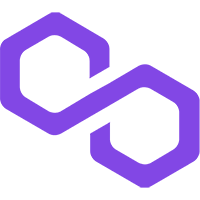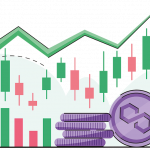
In this review, you get to understand what Polygon is, its roots, how it works, why it’s different, its future, its vision, and how it aims to change the blockchain industry. This scaling network has a lot to offer under Ethereum’s blockchain. It’s also considered as Ethereum’s internet of blockchains because one of its main goals is to aggregate scalable solutions to support the Ethereum ecosystem. Therefore, the Polygon blockchain aims at being the best and only solution for Ethereum’s congested network and high gas fees. It’s run by a global team of like-minded people who create a borderless world. Therefore, it helps developers contribute towards the core protocol of building unique dApps and joining their developer support program.
Briefly about Polygon Blockchain
Polygon aims at being a scalability framework and platform for Ethereum’s blockchain. Therefore, it helps build and connect all networks compatible with the Ethereum network. It’s Ethereum-native, and it provides layer-2 solutions, sovereign blockchains, and sidechains. Therefore, the network helps provide a platform where developers can create dApps with enhanced speeds, better scalability, and fortified security. Its implementation of Polygon Plasma Chains helps offload transactions from the main blockchain in a cheaper and faster manner. The network also has a native token known as MATIC. Currently, their token has a $16.1 billion market cap, and it’s trading at $2.35. It’s also the 14th largest crypto with a max supply of 10 billion coins and a circulating supply of 63% of the max supply of 6.87 billion coins. While the Matic coin was founded in October 2017 by Anurag Arjun, Sandee Nailwal, and Jaynti Kanani, the Polygon blockchain launched in April 2019. The three founders of Matic cryptocurrency and Polygon blockchain are considered to be India’s first crypto billionaires. The three developed the network to address all the issues of Ethereum’s congested network and high gas fees. Kanani is the team’s acting CEO, but they all lead the team behind the network.
Polygon aims to bring the world to Ethereum, with lower transactions costs than ETH.CryptoLists.com
The Polygon blockchain is Ethereum’s native scalability solution. The network offers a framework for building and connecting blockchain networks compatible with Ethereum. The goal of the network is to offer scalable solutions across the Ethereum ecosystem. It’s also aligned to be interoperable with all existing and future infrastructures. Besides this, the network offers layer-2 solutions, sovereign blockchains, and sidechains. This network can also be considered to be a layer-2 aggregator. It aims to create a multichain ecosystem for all Ethereum-compatible blockchains. The layer-2 solution is the framework built on the base chain. It helps take the strain off the base chain while complementing its pain points. Therefore, it can be considered as a plasma-based aggregator. The network has its own implementation of plasma known as Polygon Plasma Chains. This helps the network offer a framework for building dApps with speed, scalability, and fortified security. The plasma network is amongst the best developments behind the network’s technology.
Utility of Polygon Blockchain?
The network can be used by anyone who wants to access anything on the Ethereum network. However, it offers better speeds and lower transaction fees. Therefore, you can find no loss prize games, NFT markets, yield generating lending & saving protocols, and decentralized exchanges. You must send some crypto to a compatible wallet to try out the network. It has a very simple step that you can easily learn and use the system. It will give you all the services that you require and at a lower price.
After this, you can bridge some of the cryptos to the network. You should also bridge some MATIC to help with the transactions. A dollar’s worth will be enough, especially because the fees are very low. The network offers near-instant transactions and low fees, thus being the best way to obtain real-world experience while trying out decentralized finance (DeFi) protocols.
Polygon Blockchain
Polygon Blockchain Consensus Method: Proof of Stake
Release Date: April 29, 2019
Advantages at Polygon Blockchain
 + Polygon blockchain offers layer-2 and layer-1 scaling solutions.
+ Polygon blockchain offers layer-2 and layer-1 scaling solutions.+ Polygon reduces gas fees while increasing transaction speeds.
+ Offers enhanced user experience with 7000+ dApps.
+ It’s compatible with Ethereum’s virtual machine.
Disadvantages
- Way less turnover for both digital assets & NFTs on Polygon compared to Ethereum.
Costs
▪ Rated at 10/10The network offers one of the cheapest gas fees among the major DeFi chains at $0.002. The network can compete with other networks like Solana, Arbitrum, and Fantom even with a fee hike. Besides, it helps Ethereum’s network, which most people currently consider unusable due to their much higher transaction fees. This platform makes sure as a user you benefit more. It has used the loop holes of other platforms and made theirs better thus it is one investment that you can never regret to be part of.
Reputation and Buzz
▪ Reputation rated at 9/10▪ Buzz rated at 9/10
The network is known as the best solution for Ethereum’s network performance. That’s because of the sidechain that connects to the blockchain, thus helping it perform better. Sidechain also helps quicken the transaction process while offering lower fees. Even though the network is developed within Ethereum’s network, it’s not limited to Ethereum. The sidechains can work with any blockchain technology. Therefore when you get to this platform you will get to enjoy from all the platform thus is a good bargain.
Furthermore, by offering unique solutions like Polygonscan, it helps users explore and search the network for tokens, prices, addresses, transactions, and all activities on the network. This high chain explorer helps support high transaction activity on the network.
FAQ
What is Polygon blockchain?
The network offers a layer-2 scaling solution that utilizes sidechains that help ensure asset security while offering off-chain computation.
How fast is the Polygon blockchain during busy times of the day?
Crypto Lists noticed some serious slowdown lately, when the network was clogged. Many transactions didn't even go through, despite high gas costs. Apparently, the team in India is working on this at the moment. Usually, it shouldn't take more than 2-3 seconds for a transactions to go through when using Polygons blockchain.
What role does Proof of Stake play?
PoS acts as an incentivization later that maintains liveness within the Plasma chain. Besides, it offers security for all state transactions that aren’t covered by plasma.
Can I reserve a validator spot?
Yes, you can. All you need is any amount of stake to become a validator as long as there is a vacant spot.
History about Polygon Blockchain
21 of July, 2022 - The testnet from Polygon blockchain goes live on OpenSea, the biggest marketplace for NFTs.
August, 2022 - You can now trade and pay with MATIC when buying or selling NFTs through OpenSea.
September, 2022 - MATIC can be used on all NFT transactions on Opensea.
Screenshots from Polygon Blockchain
Native crypto coin for this blockchain? Learn more about Polygon Coin (MATIC)
 MATIC is the native coin for Polygon Blockchain. It is therefore also worth reading more about that on the link below.
MATIC is the native coin for Polygon Blockchain. It is therefore also worth reading more about that on the link below.›› Read our full Polygon Coin review here




































 'The Donald' releases NFT collection on Polygon
'The Donald' releases NFT collection on Polygon Swoosh: Nike launches Web3 platform with Polygon
Swoosh: Nike launches Web3 platform with Polygon Is Polygon's MATIC set for a massive 200% price push?
Is Polygon's MATIC set for a massive 200% price push? A smart partnership: Polygon & Nexity
A smart partnership: Polygon & Nexity





























